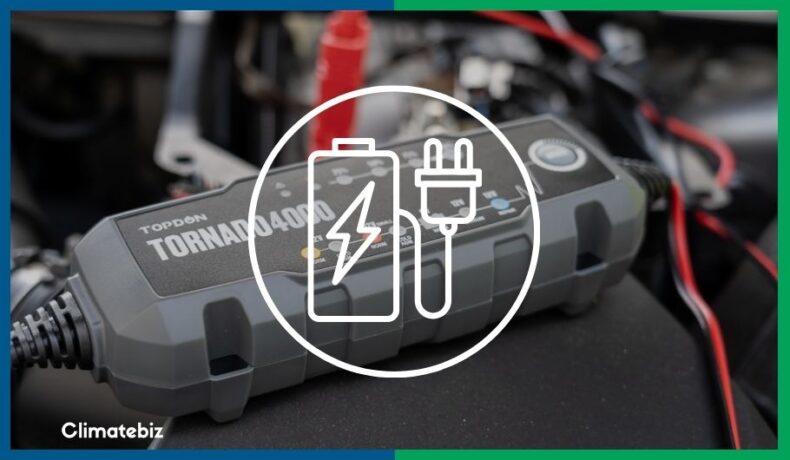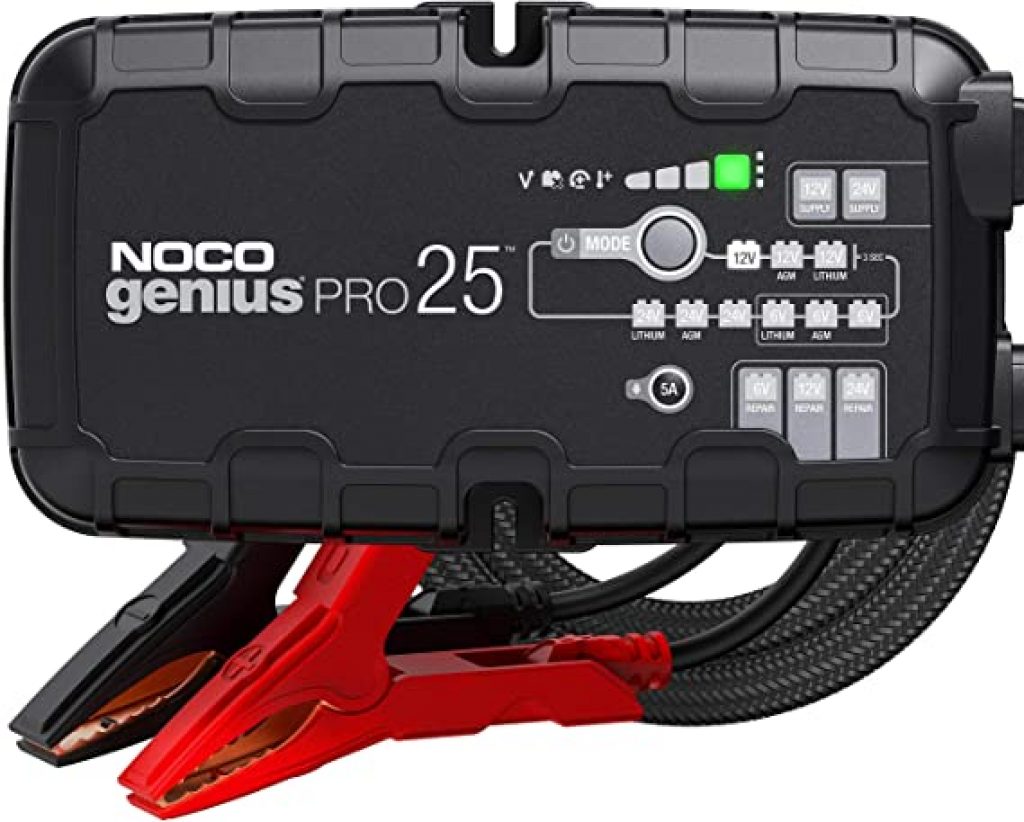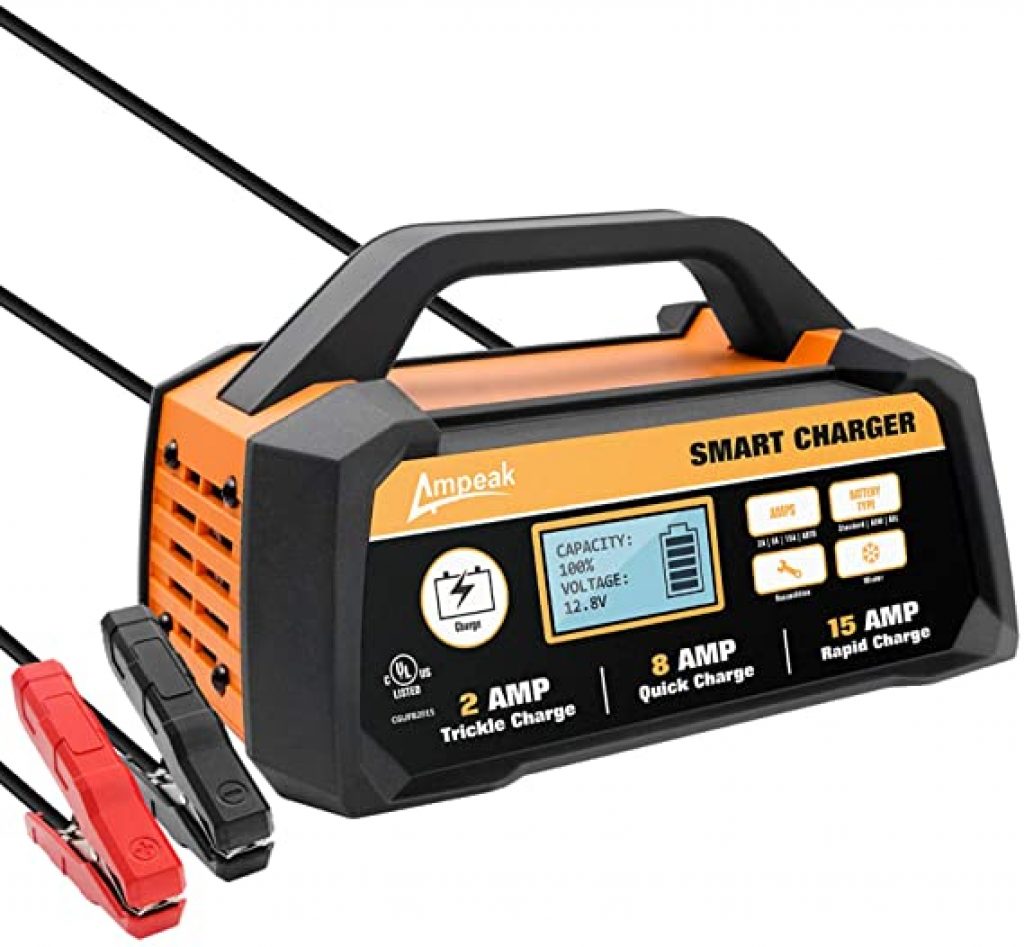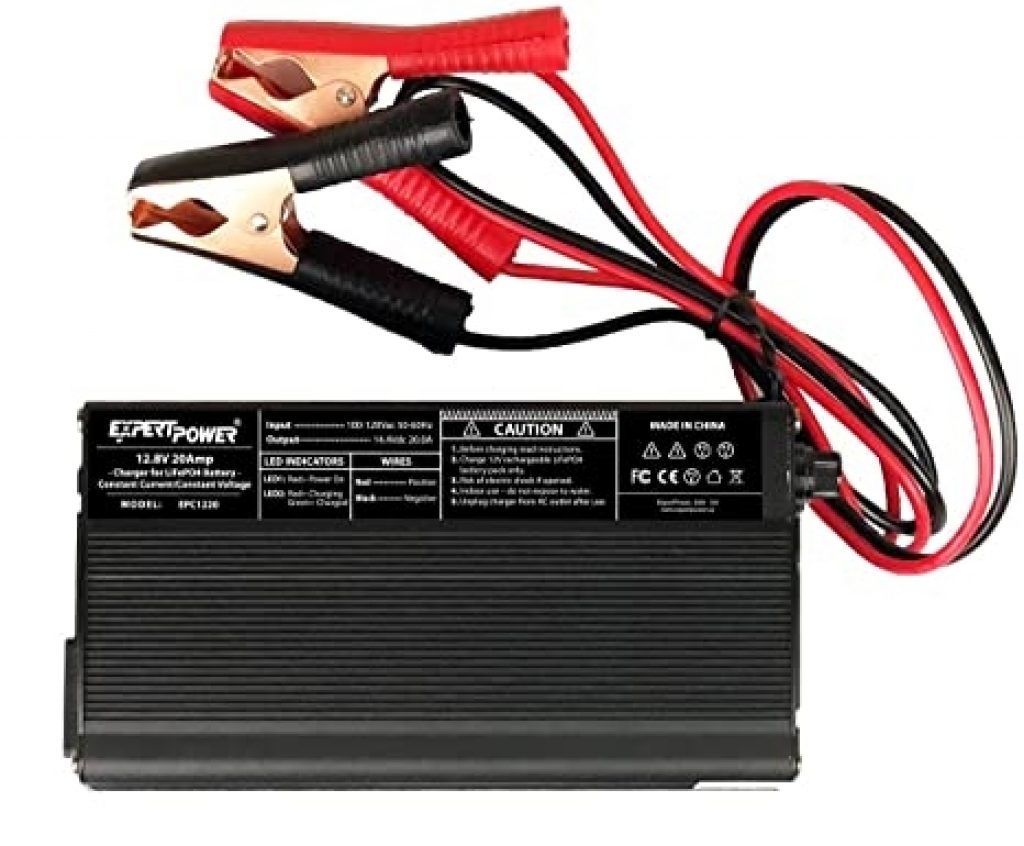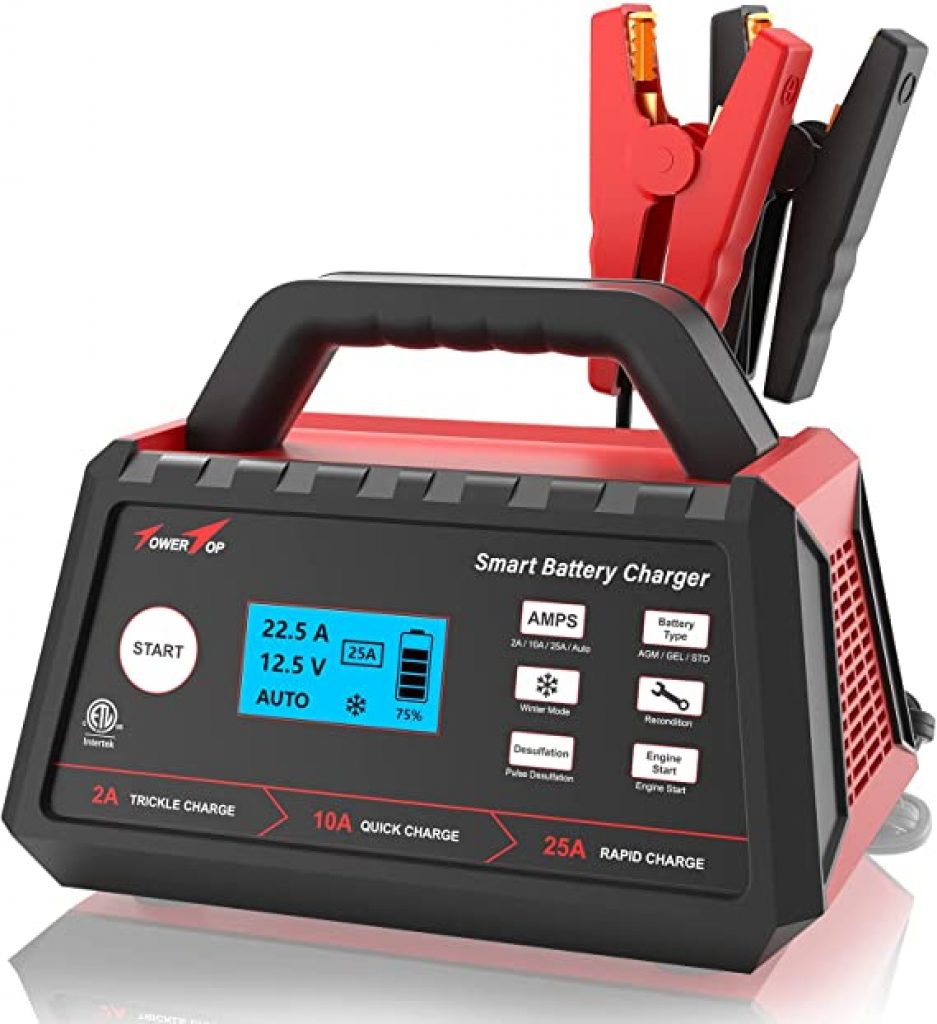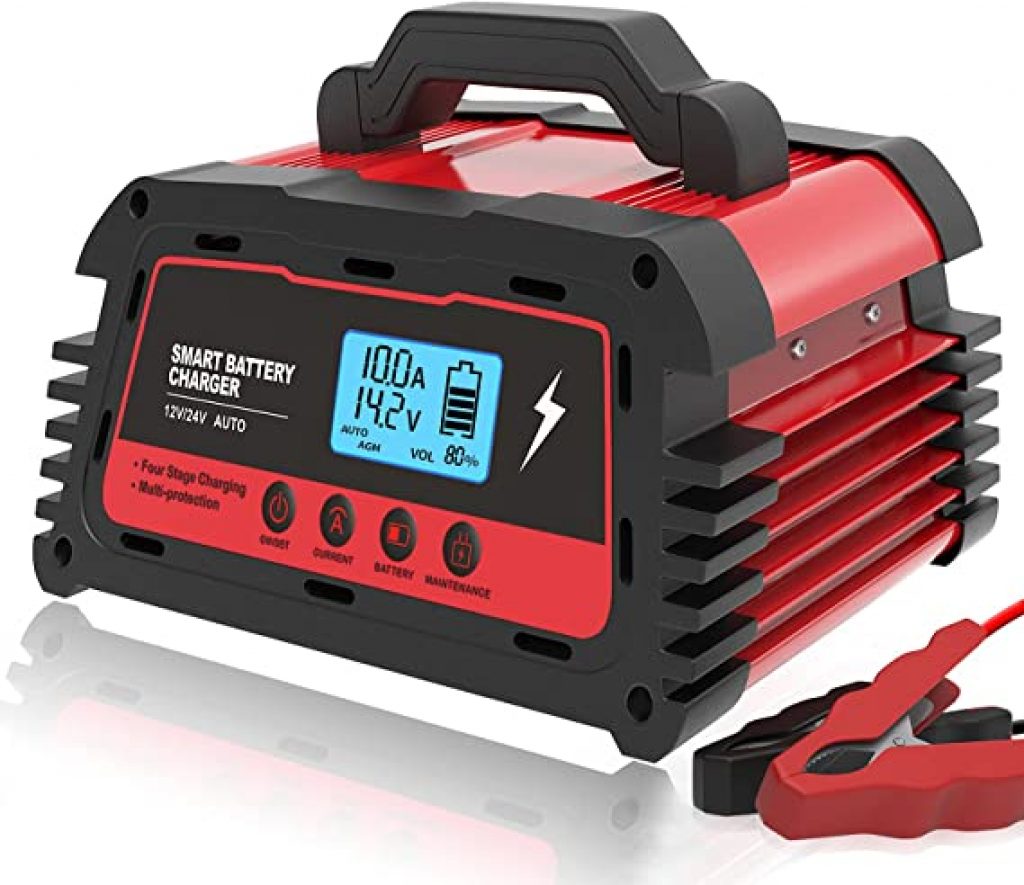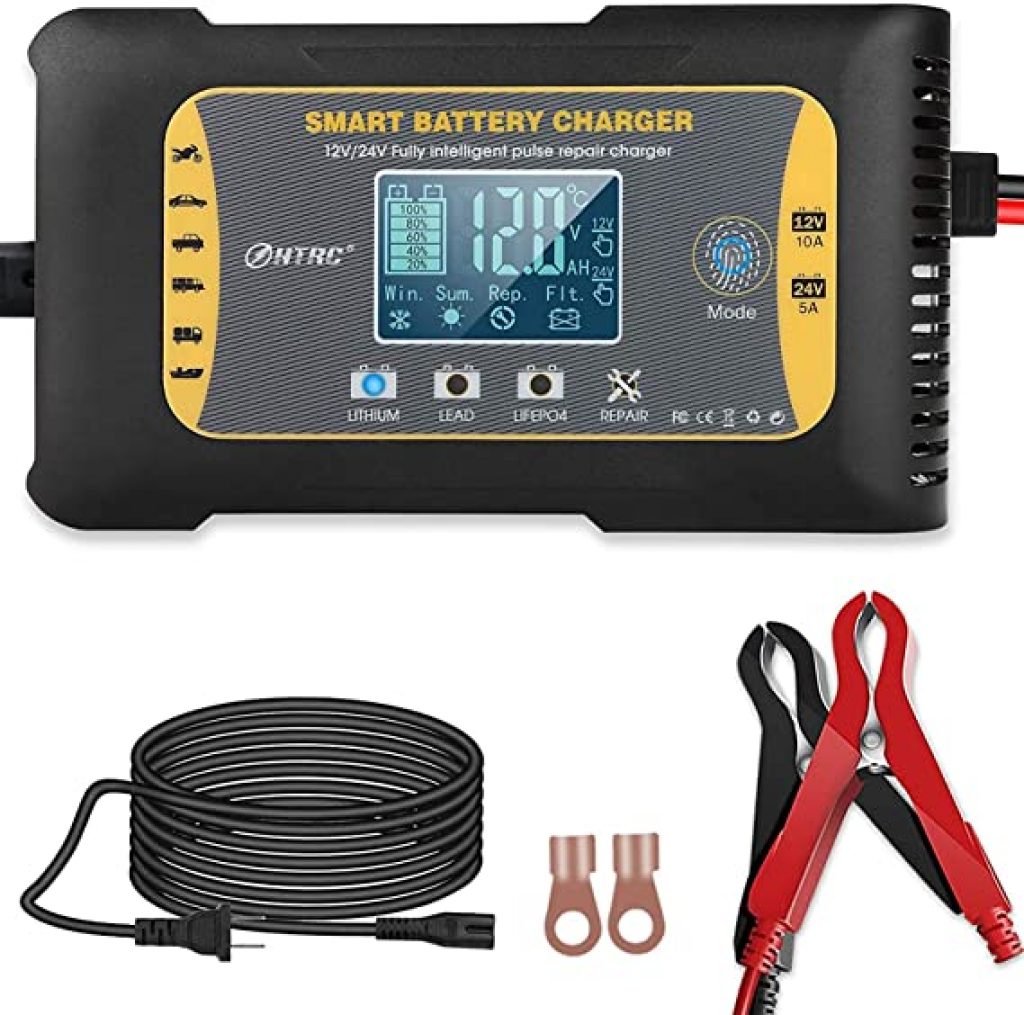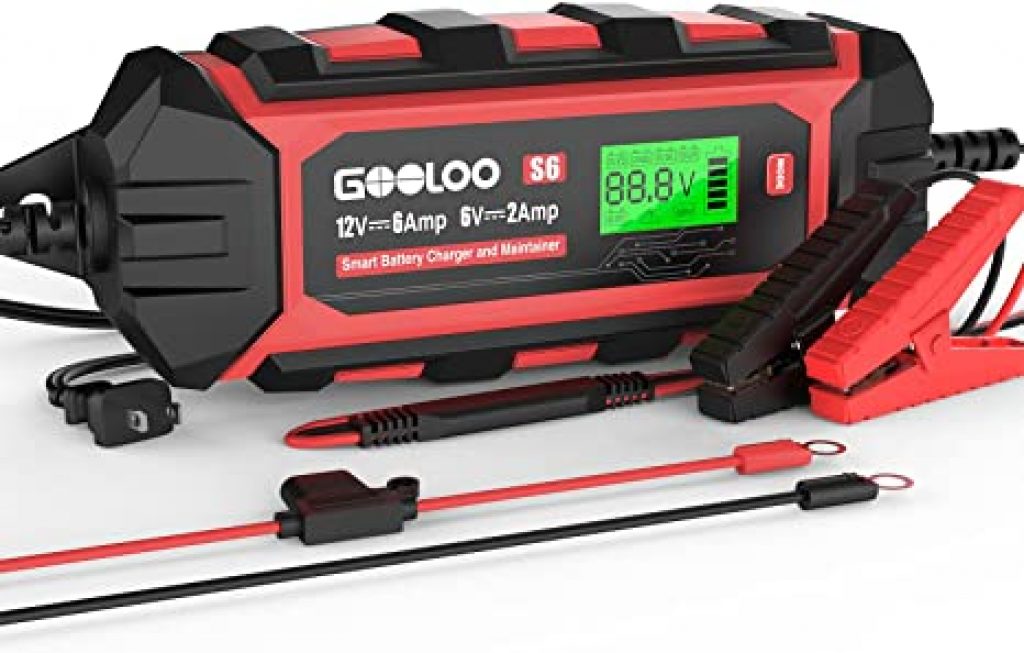Using a deep cycle battery charger is essential to maximize your deep cycle battery’s performance and overall life cycle.
Unlike starter batteries, deep cycle batteries are designed to be deeply discharged, providing a low and steady current for an extended period during every use.
However, to maintain this ability, it’s essential that you charge your deep cycle battery according to its chemistry and charging specifications.
Therefore, a deep cycle battery charger is the best charging solution for your deep cycle battery. You can adjust it to deliver the correct charging parameters to your battery.
This article will discuss important topics related to deep cycle battery chargers. Additionally, we’ll provide a guide with the 10 best options for this type of charger.
Table of Contents
What Is A Deep Cycle Battery Charger?
As its name suggests, a Deep Cycle Battery Charger is a device used to charge Deep Cycle Batteries.
“But what makes it different from any other battery charger?“
To answer this question, let’s first refresh your knowledge of Deep Cycle Batteries.
Deep Cycle Batteries
A battery is a device capable of storing and providing electrical energy. It consists of electrochemical cells where chemical reactions take place. These reactions convert chemical energy into electrical energy.
Batteries can be categorized as:
- Starter Batteries
- Deep Cycle Batteries
While a Starter Battery’s primary purpose is to deliver a short, high-current burst of power for a short period, a deep cycle battery is designed to run continuously and provide consistent power for an extended period before being fully discharged.
The main differences between these two types of batteries are the size and structure of their plates.
For instance, lead-acid starter batteries are built with thin and porous plates to increase surface area and achieve low internal resistance. This way, it can deliver a large amount of current for less than a second during a typical start.
The more plate surface area inside the battery, the greater the power it can deliver at once (for a brief moment). The most common application of a starter battery is starting an engine.
On the other hand, lead-acid deep cycle batteries have thicker and less porous plates. This strengthens the plates’ structure to resist the stresses of repeated deep discharges.
This way, deep cycle batteries can provide a continuous, reliable low-current power for an extended period, instead of just a brief burst of energy.
Deep cycle batteries are perfect energy storage solutions for off-grid cabins, tiny houses, boats, RVs, campervans, etc.
Types Of Deep Cycle Batteries
The main types of Deep cycle batteries are:
- Lead-acid: Flooded, Absorbent Glass Mat (AGM) and Gel
- Lithium-ion: Lithium Iron Phosphate (LiFePO4)
Due to differences in internal structure and application, deep cycle batteries must go through a specific charging process to maximize their service life and capacity.
That’s where the deep cycle battery charger comes in: you can adjust it to provide a charging mode according to your deep cycle battery’s needs.
In summary, a deep cycle battery charger is a device designed to charge deep cycle batteries properly. You can adjust these chargers to deliver the correct charging parameters relative to your battery’s needs. This way, you make sure your battery charges safely and effectively.
How Do Deep Cycle Battery Chargers Work?
A deep cycle battery charger works the same way as any battery charger; it converts the Alternating Current (AC) from the power source (a wall outlet or a generator) into Direct Current (DC) to deliver power to charge the battery.
When enough power is provided, the chemical reactions (between the battery’s components) happen in the opposite direction (the less favorable one). This way, electrical energy is stored as chemical energy.
However, this process isn’t as simple as it looks. In addition to converting the current from AC to DC, the charger must be able to provide the correct charging specifications, as required to charge your battery.
How do they achieve this? Deep cycle battery chargers are equipped with microprocessors to adjust the output charging parameters to provide your battery with the correct multistage charging algorithm.
How Long Do Deep Cycle Battery Chargers Last?
This depends on how you handle your charger:
- How often do you use it?
- Do you follow the manufacturer’s guidelines?
- Are you using it to charge the right battery?
- Did you adjust your charger correctly?
All of these factors will influence the durability of your charger. However, it’s safe to say that, with proper care, a good quality deep cycle battery charger can last several years.
After reading a few User Guides, we’ve noticed that the average Warranty period for Deep Cycle battery chargers is 3 years. This indicates that manufacturers believe their chargers last at least 3 years.
Usually, for Lead-acid batteries, the charger works for about the same time as the battery (usually 3 years or 500 cycles).
Why Are Deep Cycle Battery Chargers Important?
They are essential to maximizing your deep cycle battery’s performance and service life.
Using a regular charger to charge your deep cycle battery is not recommended. This charger uses high amperage to recharge the battery, shortening your deep cycle battery’s life.
Moreover, the high charge rate causes your battery to heat, preventing it from reaching a 100% state of charge.
Conversely, using the correct charger ensures your battery charges safely and efficiently every time.
As previously mentioned, Deep Cycle Batteries require a very specific charging method. Therefore, the charger must deliver different amounts of voltage and amperage throughout the charging process.
Deep Cycle Battery chargers are capable of doing this. In fact, this is their most important feature.
But what exactly is this different charging method? Let’s have a look.
Deep Cycle Battery Charging Profile
Although it may slightly vary depending on your intended use, here is the most common charging method for Deep Cycle Batteries:
For Lead-acid batteries:
Lead-acid deep cycle batteries usually require a “Three-stage Charging” method:
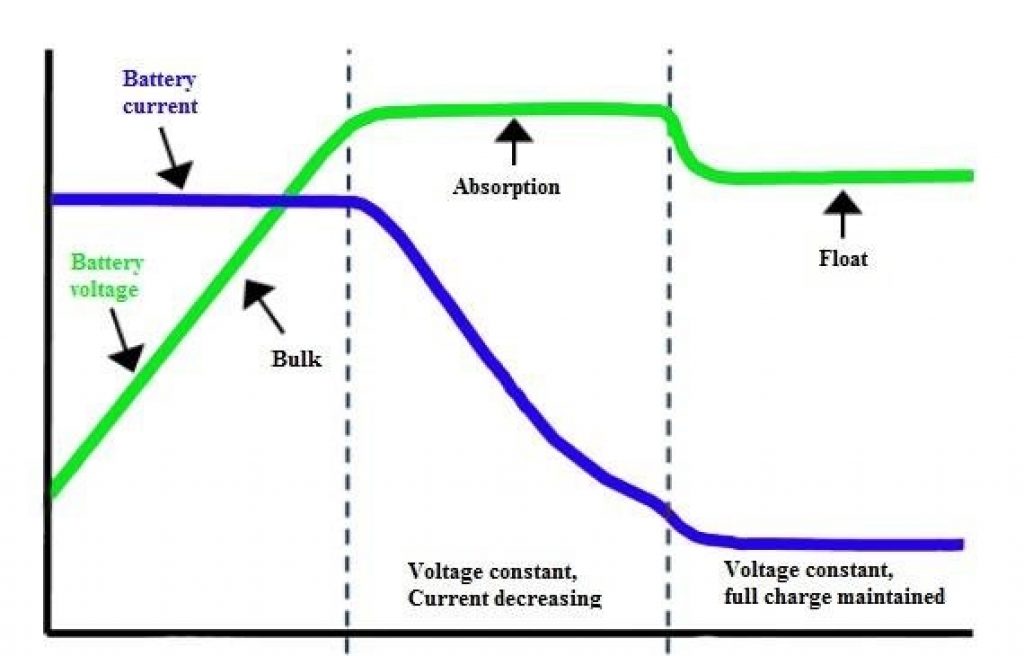
Source: Charging and Discharging Battery System Automation in Simple Wind Power Plant.
- Bulk Stage: In the beginning, a discharged battery is charged with constant current, while the voltage climbs steadily until it reaches the absorption point.
- Absorption Stage: In this stage, the voltage is kept constant while the current gradually decreases until the battery is almost fully charged (within 10% to 20% DoD). This phase usually doesn’t exceed 3h to avoid overcharging.
- Float Stage: After the Absorption phase, the voltage drops to the float voltage setpoint and the current drops to a low maintenace mode to prevent overcharging while still offsetting any self-discharge. The purpose of this phase is to maintain the battery fully charged.
In addition, Lead-acid deep cycle battery chargers must provide equalization and temperature compensation. LiFePO4 batteries don’t require these charging features.
For LiFePO4 Batteries:
LiFePO4 batteries have a much wider overcharge tolerance to handle overvoltage without its electrolyte decomposing. In addition, they have a much lower self-discharge rate, so they don’t require the “Float stage.”
This way, the LiFePO4 battery charging process has two stages:
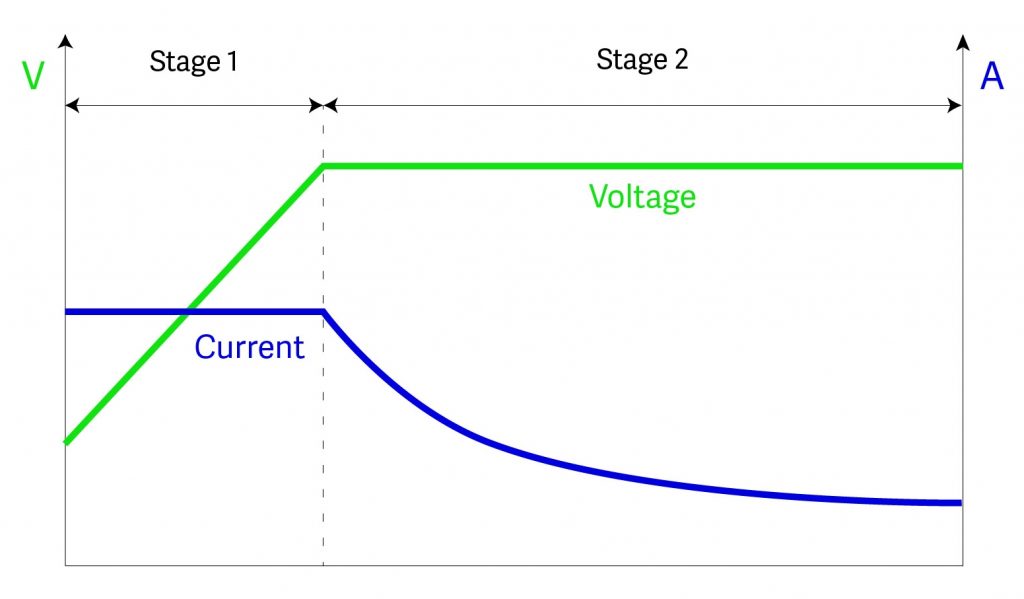
Source: Climatebiz
Stage 1: Constant Current: In the beginning, the charger provides a constant current to the battery, while the voltage gradually increases until it reaches stage 2. For 12V batteries, the maximum recommended charging voltage is 14.6V.
Stage 2: Constant Voltage: The charger maintains a constant voltage while the charging current gradually decreases to around 5% of the battery’s Amperage rating. At this point, the charging is cut off, and the battery is fully charged.
So now that you know more about your deep cycle battery’s charging process, you’ll understand why using a deep cycle battery charger is so important.
You can adjust the settings so it provides the correct charging method, as required by your battery.
Alternatively, modern chargers (often advertised as “smart chargers”) come with pre-programmed options for different battery chemistries. This way, you don’t have to adjust the charging parameters manually; you can select the charging mode for your type of battery (AGM, Gel, Lithium-ion, etc.).
Are Deep Cycle Battery Chargers Safe?
Yes, if you handle them properly. In fact, using a deep cycle battery charger to charge your deep cycle battery is as safe as it gets.
Why? Because only the correct charger can provide the proper charging parameters, your battery needs to charge safely and efficiently.
Furthermore, these chargers usually come with safety features that detect any charging problems and automatically turn themselves off to prevent damage to the battery and the charger.
Charging your battery with the incorrect charger can be very dangerous. Suppose they deliver a high enough voltage and/or current. In that case, your battery’s components can suffer degradation, leading to short circuits and thermal runaway, resulting in a fire or explosion.
So to avoid any safety risks, always use the correct charger to charge your battery (according to the battery manufacturer’s recommendation). For deep cycle batteries, use deep cycle battery chargers.
In addition, choose a charger that can provide the charging specifications that your battery requires, according to your battery’s chemistry.
In conclusion, charging your Deep Cycle Battery with an appropriate Deep cycle battery charger is the safest option. However, you must read your charger’s User Manual to handle it correctly, avoiding potential risks.
10 Best Deep Cycle battery Chargers
Here we present a list of the 10 best Deep Cycle Battery Chargers:
1. NOCO GENIUSPRO25
Product Overview:
- It is suitable for basically any kind of battery: Lead-acid and lithium-ion (6V, 12V and 24V).
- Universal Input: 100-240VAC, 50-60Hz.
- Comes with 4 different types of input cable (NA, EU, AU and UK).
- Acts as a dual-voltage power supply: 12V and 24V.
- Engineered for pros: Auto sulfation detection, reverses battery damage, thermal compensation, downrate power for smaller batteries, fully automatic.
Voltage & Amperes:
| Battery voltages it charges | 6V, 12V and 24V |
| Maximum Current Output | 25A (for 6V and 12V batteries) 12.5A (for 24V batteries) |
2. Victron Energy Blue Smart IP65
Product Overview:
- Programmed with a 7-step charging algorithm, ensuring performance and longer battery life.
- Comes with a built-in Bluetooth to allow monitoring and configuring via the VictronConnect app.
- It’s durable, safe, and silent. Protects against dust, water, and chemicals.
- Recommended for 12V batteries (up to 250Ah for RV batteries). Provides up to 15A.
- Can be used as a power supply and to recover a deeply-discharged “dead” battery.
Voltage & Amperes:
| Battery voltages it charges | 12V (there’s similar equipment with a 24V option) |
| Maximum Current Output | 15A |
3. Ampeak Smart Battery Charger
Product Overview:
- Has a Winter Charging Mode designed for charging batteries in winter weather conditions.
- 6-step Charging Program: Desulphation, Soft Start, Bulk, Absorption, Battery Test, and Float.
- It’s microprocessor-controlled for greater precision, safety, and battery life. Offers minimized risk of over-voltage, over-heat, overtime-charging, short-circuit, etc.
- Has an LCD display so you can keep track of charging status and charging parameters.
- Fully automatic high-frequency charging for all types of 12V lead-acid batteries. It can automatically select the charge rate best suited for your type of battery.
Voltage & Amperes:
| Battery voltages it charges | 12V |
| Maximum Current Output | 15A |
4. NOCO Genius GEN5X2
Product Overview:
- Multi-banks: A two-bank onboard battery charger rated for 10A (5A per bank), so you can charge two batteries simultaneously.
- Allows you to independently control each battery bank, selecting different charging methods for each.
- Proper for lead-acid as well as lithium-ion batteries.
- It is fully sealed and waterproof.
- Has thermal compensation and repair mode features.
- Force-charge mode to charge dead batteries.
- 3-year warranty.
Voltage & Amperes:
| Battery voltages it charges | 12V |
| Maximum Current Output | 10A (2x5A) |
5. CTEK MULTI US 7002
Product Overview:
- Well suited for all-year use.
- It has no LiFePO4 charging mode. It only charges 12V lead-acid batteries.
- It is easy to use, with an 8-step charging: once you select your preferred charging mode, the charger does all the rest.
- Perfect for vintage cars, boats, RVs, and campervans as they can be permanently connected to your vehicle’s battery.
- Has a patented desulfation function to recondition sulfated batteries.
- It doesn’t tolerate 220VAC input.
Voltage & Amperes:
| Battery voltages it charges | 12V |
| Maximum Current Output | 7A |
6. ExpertPower Smart Charger
Product Overview:
- Perfect for LiFePO4 batteries (40Ah and above).
- It carefully uses CC/CV charging algorithms to maximize the battery’s lifespan while efficiently charging.
- Specially designed for 12V LiFePO4 batteries, with a 2-step charging mode.
- Charging Voltage: 14.4V
- Offers over-heating protection and smart LED indicators.
- 1-year hassle-free limited warranty.
Voltage & Amperes:
| Battery voltages it charges | 12V |
| Maximum Current Output | 20A (2A and 5A options also available) |
7. TowerTop BC-025 PRO Battery Charger
Product Overview:
- This charger is able to recondition dead batteries with voltages as low as 1V.
- Fully-automatic features and memory function for prior-setting.
- Recommended for lead-acid batteries only.
- Repairs severely sulfated battery terminals and reconditions batteries that lost performance.
- Smart-chip-controlled, with 8-stage charging for charging precision, battery power optimization, and extended battery life.
Voltage & Amperes:
| Battery voltages it charges | 12V |
| Maximum Current Output | 2A, 10A, and 25A |
8. ATian Smart Battery Charger
Product Overview:
- This smart charger can charge and repair all lead-acid batteries.
- There’s no LiFePO4 mode, so it is not recommended for charging lithium-ion batteries.
- Can charge batteries with capacities between 15Ah and 200Ah.
- It comes with a microprocessor-controlled program to automatically detect the battery’s voltage and select the optimal charging current.
- Stops charging automatically once the battery is fully charged, preventing overcharge.
Voltage & Amperes:
| Battery voltages it charges | 12V and 24V |
| Maximum Current Output | 20A (for 12V) and 10A (for 24V) |
9. Haisito 7- Stage Battery Charger
Product Overview:
- The cheapest on this list, this charger can provide 7-stage charging to charge every type of lead-acid battery, as well as LiFePO4 batteries.
- It automatically switches from fast charge to top charge and then to trickle charge.
- Its pulse repair function can help extend battery life but it cannot repair a seriously damaged battery.
- Equipped with smart protection against overload, overheating, short circuits, etc.
- Thermal compensation feature: summer mode and winter mode. Ideal for RVs that are used during these seasons.
Voltage & Amperes:
| Battery voltages it charges | 12V and 24V |
| Maximum Current Output | 10A (for 12V) and 5A (for 24V) |
10. GOOLOO Supersafe S6 Smart Battery Charger
Product Overview:
- Last on the list, these chargers can be used to charge 6V and 12V lead-acid batteries and 12V LiFePO4 batteries.
- Its 10-stage charging program provides a variety of charging methods, solving sulfation problems and restoring the battery’s lost performance.
- It has an easy-to-follow display that shows charging voltage, charging mode, and battery levels.
- Comes with several safety features to ensure maximum safety during use.
- Can charge batteries with a capacity of up to 150Ah, which can be limiting for certain applications.
Voltage & Amperes:
| Battery voltages it charges | 6V and 12V (lead-acid) and 12V (LiFePO4) |
| Maximum Current Output | 2A and 6A |
Final Thoughts
A deep cycle battery charger is an essential piece of equipment for anyone who owns a deep cycle battery.
There are several different types of deep cycle battery chargers to choose from, and it’s essential to select the one that best suits your battery’s charging needs.
Doing so ensures that your battery lasts for as long as possible while maintaining solid performance.

